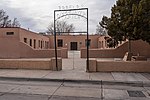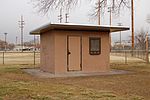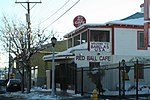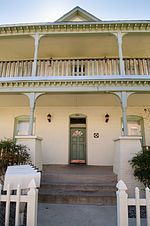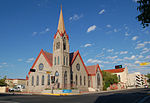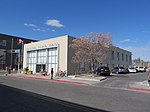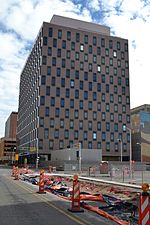Barelas

Barelas is an inner-city neighborhood of Albuquerque, New Mexico, located immediately south of Downtown. It consists of the triangular area bounded by Coal Avenue, the BNSF railroad tracks, and the Rio Grande. Originally a separate village, it was absorbed into Albuquerque during the railroad-fueled growth of the 1880s but still retains a distinct identity. The settlement was formally established in 1662, predating even Old Town as the oldest neighborhood in the city. Although it was long one of Albuquerque's most economically distressed areas, Barelas has seen significant development since the opening of the National Hispanic Cultural Center in 2000 and may be starting to experience gentrification. The neighborhood's main commercial area is listed on the National Register of Historic Places as the Barelas-South Fourth Street Historic District.
Excerpt from the Wikipedia article Barelas (License: CC BY-SA 3.0, Authors, Images).Barelas
Barelas Street Southwest, Albuquerque Barelas
Geographical coordinates (GPS) Address Nearby Places Show on map
Geographical coordinates (GPS)
| Latitude | Longitude |
|---|---|
| N 35.077777777778 ° | E -106.65555555556 ° |
Address
Barelas Street Southwest
Barelas Street Southwest
87102 Albuquerque, Barelas
New Mexico, United States
Open on Google Maps
